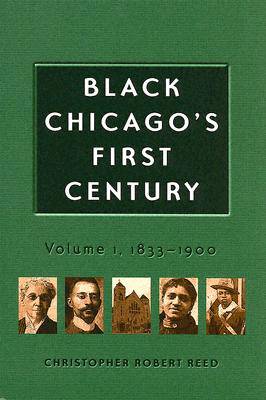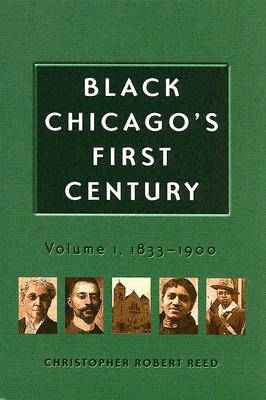
- Afhalen na 1 uur in een winkel met voorraad
- Gratis thuislevering in België vanaf € 30
- Ruim aanbod met 7 miljoen producten
- Afhalen na 1 uur in een winkel met voorraad
- Gratis thuislevering in België vanaf € 30
- Ruim aanbod met 7 miljoen producten
Zoeken
€ 90,95
+ 181 punten
Omschrijving
In Black Chicago's First Century, Christopher Robert Reed provides the first comprehensive study of an African American population in a nineteenth-century northern city beyond the eastern seaboard. Reed's study covers the first one hundred years of African American settlement and achievements in the Windy City, encompassing a range of activities and events that span the antebellum, Civil War, Reconstruction, and post-Reconstruction periods. The author takes us from a time when black Chicago provided both workers and soldiers for the Union cause to the ensuing decades that saw the rise and development of a stratified class structure and growth in employment, politics, and culture. Just as the city was transformed in its first century of existence, so were its black inhabitants.
Methodologically relying on the federal pension records of Civil War soldiers at the National Archives, as well as previously neglected photographic evidence, manuscripts, contemporary newspapers, and secondary sources, Reed captures the lives of Chicago's vast army of ordinary black men and women. He places black Chicagoans within the context of northern urban history, providing a better understanding of the similarities and differences among them. We learn of the conditions African Americans faced before and after Emancipation. We learn how the black community changed and developed over time: we learn how these people endured--how they educated their children, how they worked, organized, and played. Black Chicago's First Century is a balanced and coherent work. Anyone with an interest in urban history or African American studies will find much value in this book.
Methodologically relying on the federal pension records of Civil War soldiers at the National Archives, as well as previously neglected photographic evidence, manuscripts, contemporary newspapers, and secondary sources, Reed captures the lives of Chicago's vast army of ordinary black men and women. He places black Chicagoans within the context of northern urban history, providing a better understanding of the similarities and differences among them. We learn of the conditions African Americans faced before and after Emancipation. We learn how the black community changed and developed over time: we learn how these people endured--how they educated their children, how they worked, organized, and played. Black Chicago's First Century is a balanced and coherent work. Anyone with an interest in urban history or African American studies will find much value in this book.
Specificaties
Betrokkenen
- Auteur(s):
- Uitgeverij:
Inhoud
- Aantal bladzijden:
- 600
- Taal:
- Engels
Eigenschappen
- Productcode (EAN):
- 9780826215703
- Verschijningsdatum:
- 25/07/2005
- Uitvoering:
- Hardcover
- Formaat:
- Genaaid
- Afmetingen:
- 166 mm x 243 mm
- Gewicht:
- 1093 g

Alleen bij Standaard Boekhandel
+ 181 punten op je klantenkaart van Standaard Boekhandel
Beoordelingen
We publiceren alleen reviews die voldoen aan de voorwaarden voor reviews. Bekijk onze voorwaarden voor reviews.








